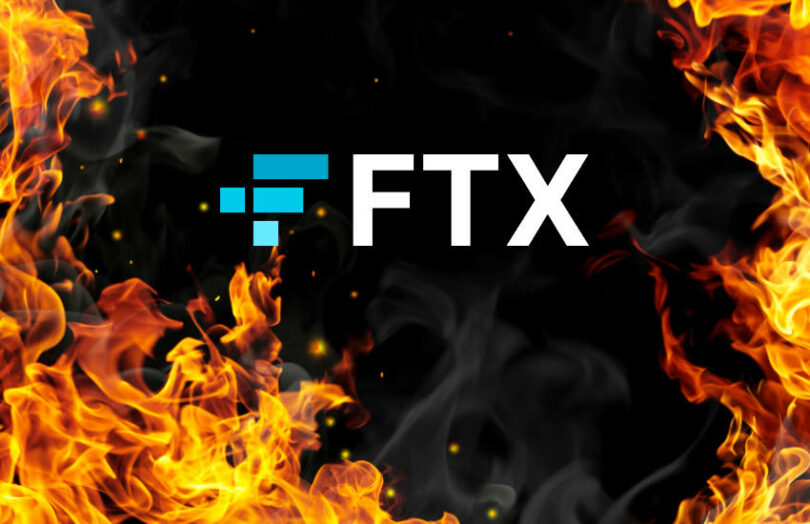In the latest installments of Sam Bankman-Fried’s (SBF) media tour, he ‘tested’ more explanations of how so much of the FTX customers’ money ended up at Alameda Research – the market-making firm owned by himself. The answers don’t hold water because there’s a question that, oddly, somebody has yet to ask.
In a Wall Street Journal (WSJ) interview, SBF said that about half of the balance owed by Alameda to FTX was from wire transfers that customers made to FTX via Alameda in the early days before FTX had a bank account. He claims some customers continued to use that route after FTX had a bank account. SBF said the figure was north of $5 billion, implying that Alameda owed FTX more than $10 billion, which WSJ previously reported.
However, when SBF put together his emergency balance sheet as FTX was imploding, the figure was $8 billion rather than $5 billion for the “poorly internally labeled fiat account”.
The missing question
A Bloomberg interviewer asked how the $8 billion was spent, and the response was all the stuff we’ve read about venture capital investments, paying off Binance, buying real estate, etc. But that’s how Alameda spent it.
The real question is what happened at FTX.
From FTX’s perspective, when a client transferred $100 to FTX via Alameda’s bank account, the client would have received a positive balance on FTX, and the equivalent amount was deducted from Alameda’s account. Everybody has focused on the Alameda balance, which we’ll come back to.
Say FTX clients transferred $8 billion to Alameda, and imagine for a second that the money was actually paid to FTX, not just as a bookkeeping entry. Then the clients said to FTX, ‘buy me some Bitcoin, Ether,’ or whatever. And FTX uses the client’s cash to buy the crypto on their behalf. All good.
But what if the $8 billion was never transferred to FTX, which is what SBF is saying. There was just some bookkeeping entry.
Without receiving the cash, how could FTX have bought the crypto that belongs to the customers?
Where would that money have come from to buy the crypto on behalf of the clients?
If Alameda handed over the crypto to pass on to the clients, then the intercompany balance would not have been $8 billion. Everything would have been hunky dory. And FTX was not sufficiently profitable to buy $8 billion of crypto out of its own pocket.
Could the explanation be that FTX sold some of its own FTT tokens or Serum token to buy the tokens for the clients? Nope. As of October, the combined market caps of FTT and SRM were around $3.3 billion.
None of these explanations hold water.
So the bigger question is: was there fictitious accounting? Did the system fraudulently show clients that they had Bitcoin or ETH, when in reality, FTX had never bought the crypto for the clients – the ones that did the Alameda transfers?
THAT is the $8 billion question. And that is not something that suddenly happened in the last month. What transpired in November was the run on FTX exposed the shortfall in assets held on behalf of clients.
How the client deposits via Alameda worked: WSJ
SBF confirmed to WSJ that customers could see those dollars they remitted allocated on their screens. Obviously, otherwise they would have been screaming blue murder for years.
As in other interviews, SBF claimed he wasn’t running Alameda. However, he was the Alameda CEO in the early days when much of this money was transferred to FTX via Alameda. Or not transferred, as it turns out.
And specifically, he was CEO when this methodology of deposits via Alameda was created. In fact, there was such a small team at that stage that he was likely either the architect or intimately involved in the plan of using Alameda’s bank account.
Despite running Alameda, and therefore being familiar with how it worked, SBF took a ‘guess’ about how it worked when talking to WSJ.
“Dollars are fungible with each other. So it’s not like there’s this one dollar bill that you can trace through from start to finish,” said SBF.
Let’s just stop right there. That’s unadulterated rubbish. Yes, dollars are fungible with each other, but accounting systems let you trace stuff. Apart from accounts and transaction records, every single accounting system has an audit trail. Precisely so you CAN trace transactions from start to finish. Unless you intentionally wipe the audit trail.
“It is more just omnibus … pots of assets in various forms,” SBF added. Just to clarify, omnibus accounts are pooled accounts. Most crypto exchanges have omnibus Bitcoin wallets – all their clients’ funds are held in a single wallet. But the accounting system precisely records how much belongs to each individual.
When a client uses $100 of their cash to buy $100 of Bitcoin, the total amount of Bitcoin held in the client omnibus Bitcoin wallet should increase by $100.
Let’s return to the Alameda account at FTX. From FTX’s perspective, when a client transferred $100 to FTX via Alameda’s bank account, the client would have received a positive ‘cash’ balance on FTX, and the equivalent amount was deducted from Alameda’s account. So Alameda had a negative balance. But somehow, that Alameda side was lost. Or ignored. And the amount grew, you know to a negative $5 billion. Or maybe $8 billion.
One way this $5 billion could be ignored is if the system on which clients’ assets and liabilities are recorded made no attempt to balance itself. That seems inconceivable. If that were the case, there’s a high risk of clients noticing. Or there was a deliberate fudge in the system that made it appear balanced by using a “stub account”.
Client deposits via Alameda: The Block edition
Yesterday, The Block published a long interview with SBF. Frank Chaparro asked how the auditors didn’t catch this. Here’s the SBF response:
“This (Alameda’s negative $5bn) was effectively a customer negative position (because Alameda was a customer). And you know many, many customers had negative positions open on FTX. It was a margin trading exchange.”
It seems a bit doubtful that there would be any other client accounts with a negative balance of $5 or $10 billion. You’d think that might stand out unless it was deliberately hidden. SBF has frequently referred to this balance as a stub account, implying that it was not displayed on the trading system.
SBF continued, “That’s sort of how it had worked. Those were not part of FTX’s assets or liabilities. So they were customer assets and liabilities. So FTX’s financials were not directly impacted by this.”
So SBF is saying that the auditors were only interested in FTX’s own balance sheet. As customer assets are under custody, they did not appear on FTX’s balance sheet. And hence auditors were not interested?
Wow! Here are some fundamental reasons why an auditor would be very interested.
Firstly, it’s widely known that FTX offered a high level of margin, which is risky. Auditors have to be sure that the company can remain a going concern. So an auditor would look at the level of leverage on the platform. A single account overdrawn by $5 billion should set off one or two alarms. Or if the trading platform accounts don’t balance because of a missing $5 billion, that’s more than a little problematic.
Secondly, a balance sheet doesn’t just record assets and liabilities. It also has to account for contingent liabilities. Such as if FTX was negligent and mislayed a few billion of clients’ money.
Thirdly, related party transactions – such as the ones between FTX and Alameda – have to be disclosed in accounts even if there are no intercompany balances. Related party notes indicate activity between related parties, not just balances. And because Alameda is a client, it makes it even more important this disclosure has to be done. Any auditor would have a specific checklist of questions and tasks around the Alameda relationship.
Bankman-Fried implying that auditors weren’t interested because the customer assets were not on the FTX balance sheet is just the latest incredibly dubious statement.
In a later article before SBF’s arrest we explored how a fraud case could be prosecuted.






